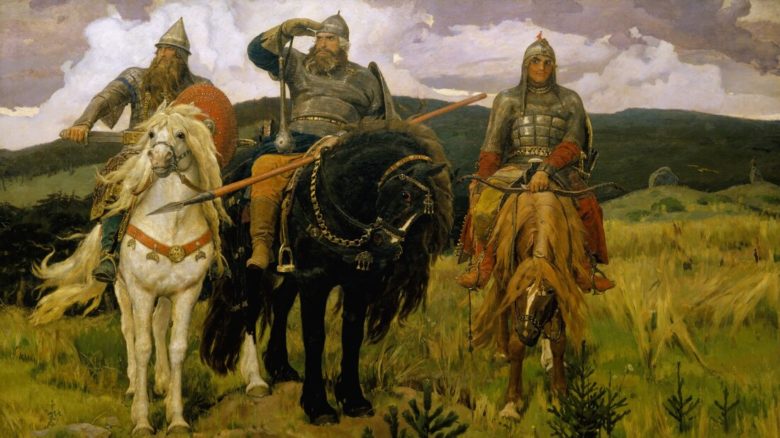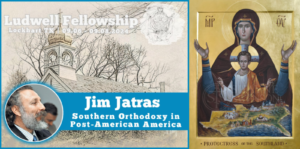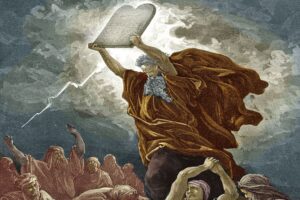Editor’s note: Historian Dr. Brion McClanahan once wrote, “To many Americans, a myth denotes a lie, a fairy tale that cannot be proven. But myths are the foundation of much of our historical consciousness.” This is precisely why reformers, re-educators, and renovationists want to destroy them. Therefore, I say, never forget.
By Walt Garlington
Southern history is full of semi-legendary figures – from explorers and settlers like John Smith and Daniel Boone to unconquerable warriors like Francis Marion and Bedford Forrest to centaur-cavalrymen like J.E.B. Stuart. But what are we doing with these riches? Unfortunately, not a lot.
Johnny Cash shows what is possible. His ballad ‘The Legend of John Henry’s Hammer’ about the half-mythical folk hero John Henry is one of his finest works.
The graphic novel recounting the deeds of General Patrick Cleburne is also praiseworthy.
And there are some excellent poems scattered here and yonder.
But more needs to be done. Dixie’s young folks especially are ‘gobbling poison’, in C. S. Lewis’s words, for lack of true sustenance, turning in increasing numbers to alternative sexual identities to try to give meaning to their lives. They need the Gospel first of all, of course, but mankind has been constituted in such a way that he also needs roots, stability in a place and in a tradition, in order to be a whole, healthy person, body and soul. We need to find new ways to pass on the Southern inheritance to our children and to Southrons of all other ages.
This inheritance is being suppressed, but Alexander Solzhenitsyn, who spent years in the Soviet gulag and witnessed the unbelievable destruction of Russia’s thousand-year-old Christian culture, gives us reason for hope. While Russia was living in the midst of that nightmare, he was able to say, ‘When “the overly straight shoots of Truth and Goodness have been crushed, cut down, or not permitted to grow,” then perhaps the “whimsical, unpredictable, and ever surprising shoots of Beauty will force their way through and soar up to that very spot, thereby fulfilling the task of all three”’ (The Solzhenitsyn Reader, Wilmington, Del., ISI Books, 2006, p. xxxvi).
And that is what has happened in Russia, where Communism has been overthrown and a return to tradition is well underway. Through new works of beauty, the South can also preserve and renew her heritage. It is to Mr Solzhenitsyn’s fellow Russian Christians that Southerners can turn for a remarkable example of how this has been accomplished in another country, of how the influence of folk legends can remain strong over an extraordinarily long period of time.
Several hundred years ago, Ilya (Elijah) Muromets lived and died. He is recognized as a saint by the Orthodox Church, and the legends about his life form a wonderful tapestry that extend into many fields of the arts. An encyclopedist has written:
For nearly a millennium, tales of Ilya Muromets have been passed on from generation to generation. In traditional fables he is a wise elder, whereas in the most recent cartoon – Vladimir Toropchin’s “Ilya Muromets and Nightingale the Robber” – he is a dynamic and rather muscular young man, determined to gain the favours of a voluptuous blonde (a princess, of course). Films, cartoons and even video games have been dedicated to his eventful legendary life. All of these unlikely representations are united by one determining feature: physical and spiritual integrity, dedicated to the protection of the Homeland and People.
… Over the centuries, Ilya Muromets’ canonical image has been preserved, yet he has also gained popular acknowledgement in new, adapted forms. He is the protagonist of many literary works, the hero of numerous movies (e.g. Aleksandr Ptushko’s film Ilya Muromets), paintings (e.g. bogatyr s and Ilya Muromets by Viktor Vasnetsov), monuments and cartoons. There’s even an aircraft named after Ilya Muromets. Designed by Igor Sikorsky it was Russia’s and the world’s first four-engine strategic bomber.
We do not have to confine depictions of our Southern heroes to traditional mediums. Films, cartoons, video games, internet videos – any canvas should be welcomed, as it is with St Ilya in Russia.
The encyclopedist goes on to say:
What follows, according to the tales, is an avalanche of great exploits and victories. Ilya Muromets single-handedly defends the city of Chernigov from invasion by the Tatars and is offered a knighthood by the local ruler, but Ilya declines to stay. In the forests of Bryansk he then kills the forest-dwelling monster Solovey-Razboynik, who murders travellers with his powerful whistle. Ilya Muromets becomes the greatest defender of Rus against all of its enemies, both real and fictional ones.
Similar things could be said of Lee or Jackson in their battles with the Yankee enemy who was better armed and more numerous than they were. Yet no one has bothered to write even the first symphony in their honor, expressing their great deeds in music, though Ilya of Murom has one.
The Christian fantasy writer and deacon Nicholas Kotar shows how Ilya’s legends have spread beyond the borders of Russia into other lands (Germany, Scandinavia). Have not a fair number of Southerners also become well-known in places outside the South (Poe, Faulkner, O’Connor, Welty)? Surely our myth-makers could craft something from that – misty legends of story-tellers who travel o’er the seas to captivate entire places with the power of their words.
The traditional Southern mind, being soaked in Greek and Roman classics, could likewise make use of the myths from those lands, combining them with our legendary figures. Forrest storming Hades to save Tennessee from an invasion of furious shades instigated by the hateful, bloodthirsty Hera? General Lee visited by the Graces in the mountain forests of Virginia, receiving a promise of their watchcare over him during the War?
Some mythical figures could stand on their own as well. In Southern literature, Aeneas is an archetype for the South as a whole, a man who transplanted his culture from Troy to Rome, just as the South did from England to Virginia.
The possibilities in this vein are tantalizing, especially considering how a Greek mythology-based video game, Hades, has just been awarded the first Hugo Award, heretofore primarily given for sci-fi and fantasy literature, for a video game. The Southern mind could no doubt do some interesting work in this field if it so desired and if the Lord so willed.
But we do not mention mythology lightly. It is important to utilize the elements of it in our re-presentation of Southern heroes. Dr. Boyd Cathey, writing about Hollywood’s better Western films, makes a key point:
Perhaps it is the need to rediscover an American past that, after all, may be partly mythic, but mythic in the very best and most honorable sense of that word. Indeed, did not John Ford in “The Man Who Shot Liberty Valance” have his newspaper editor tell Jimmy Stewart: “This is the West, Sir; when legend becomes fact, print the legend”? Perhaps it is the Western’s celebration of American tradition, with its mixture of both truth and myth, which may beckon to a future generation of converts.
Myth speaks to people in a special way. C. S. Lewis makes the point over and over again that it conveys truth in a manner that bare facts cannot:
The idea of myth was an important one for C.S. Lewis, especially with regard to his conversions to theism and Christianity, and his later apologies for the Christian faith. Lewis came to define myth in perhaps a non-traditional manner, writing that “Myth in general is not merely misunderstood history… nor diabolical illusion… not priestly lying… but at its best, a real unfocused gleam of divine truth on human imagination” (Miracles, 138). Thus, one must understand that what Lewis refers to as myth is not some cleverly narrated story but truth wrapped in narrative which can, when properly understood, convey great truths to its readers.
The South will need to make wise use, then, of myth and myriad other materials to keep her heroes alive and relevant for each new generation. Ilya of Murom is a perfect illustration of how this can be done. The South will probably always be most comfortable with words, written, spoken, or sung, but we should not let that be a hindrance to the creative spirit within her in re-telling the stories of our noble men and women.
Great dedication and sacrifice will be needed (forming film or video game studios, guilds for painters, etc.), but when we consider that the alternative is the bleak, sterile world of globalization, or the idolatry of Yankee Americanism/consumerism, then we should happily take upon us the arduous labor for the sake our forebears, the patrimony they have bequeathed to us, and the generations who will follow us here in Dixie.
— Walt Garlington is a chemical engineer turned writer and editor of the website Confiteri: A Southern Perspective.






Comments
The people of the South,among other challenges,have a, ” race war ” on their hands. OH ! – Yes they do ! ! Will they emerge from the smoke of battle integral and unimpaired ? Centuries ago,the Slavs of Russia repeatedly faced very much the same kind of challenge and battle. And yet – they DID survive,as the Russian Slavic Race,right up to the present day ! They were never fully conquered and crushed by Bolshevik Communism during seventy horrid blood-drenched years of state terrorism and mass imprisonment,mass enslavement and mass extermination. Why ? Because the whole governmental and administrative apparatus of Communism was in the hands of,and under the control of,a – ” foreign invader and occupier ” . One hundred million of the indigenous Slavic People – and more – pulled through !!! And most retained bits and traces of Christian belief,thought and custom. But – they had a vast,gigantic forested continent to which they could withdraw for shelter and recovery. The people of the South are ” squeezed all ’round ” and have no such retreat.
[ Check PayPal for a modest monetary incentive. ].
Pollard’s Life of Jefferson Davis and Secret History of the Confederacy is online. His fourth chapter is about the oligarchy that decreed that all the south had to follow South Carolina into secession: all arsenals and forts had to be seized. The big names were men with bankster connections (Judah Benjamin and John Slidell) freemasons (Robert Toombs) and Knights of the Golden Circle (Jefferson Davis). Knights were heavily involved in seizing the arsenals and intended to make slave states in Central America, run by Protestants. The site http://www.jewish-history.org has a thread about Salomon de Rothschild’s visit to America, revealing his endorsement of the Jewish element among the conspirators. Pollard agrees that the Jewish element increased its power under Davis. The myth is that secession was done for the benefit of Christians. However, that is just not what the Abbeville Institute writers want folks to believe.
So why are you here? We see the fruits of the Yankees winning everyday in 21st century America, and the world.
Pingback: Southern myths & legends – Whatfinger Link & Comment Share